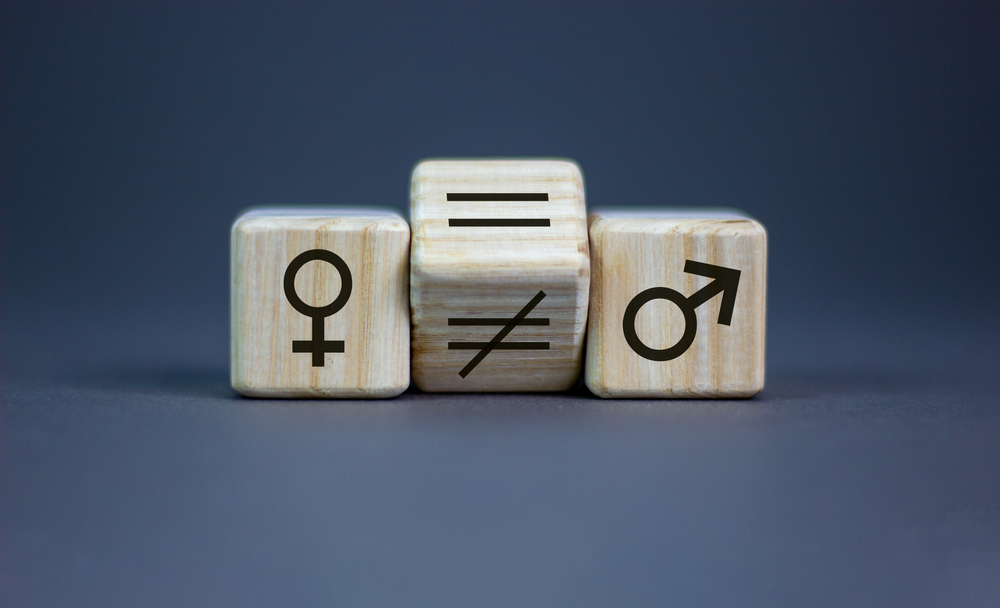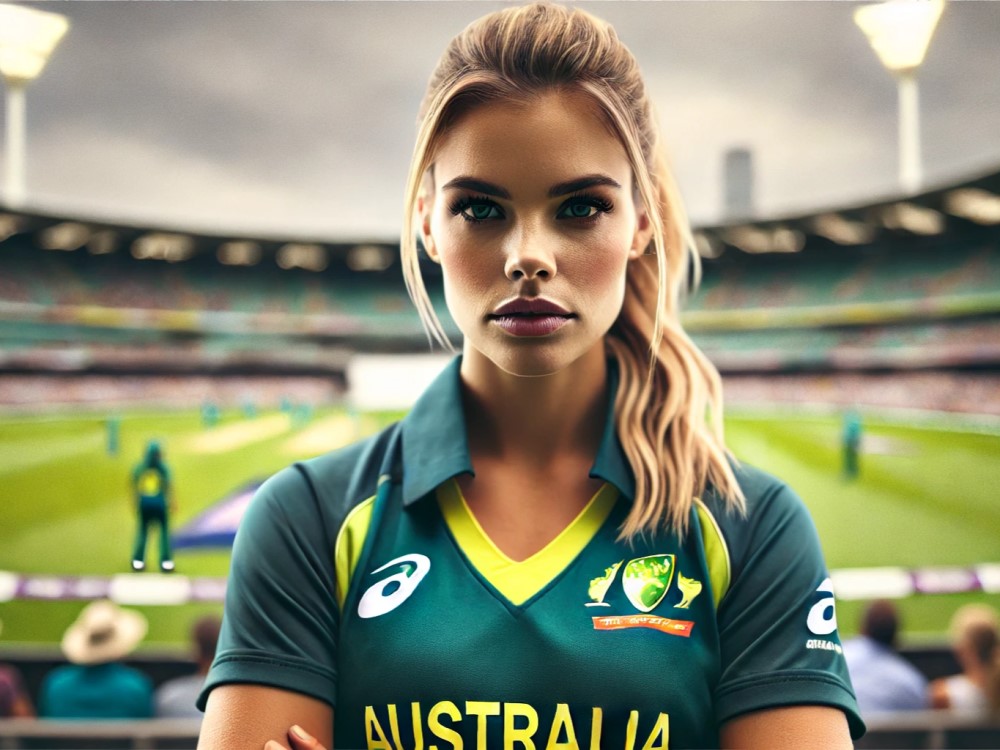
Challenges Faced by Women Cricketers
Cricket, often seen as a sport that embodies grace, strategy, and athleticism, has a rich and complex history that intertwines with societal norms and cultural expectations. Within this broad tapestry, women’s cricket has carved out its own niche, reflecting not only the sport’s evolution but also the shifting tides of gender dynamics across the globe. The challenges faced by women cricketers, from its early beginnings to the current landscape where it wields significant influence, mirrors a broader narrative of struggle, perseverance, and gradual recognition.
However, despite the progress and the increasing visibility, women in cricket continue to face a myriad of challenges that hinder their ability to compete on an equal footing with their male counterparts. These obstacles are not just confined to the field but extend into areas of sponsorship, societal perceptions, and the very structure of sports administration.
The pursuit of gender equality within cricket is a multifaceted struggle, encompassing everything from access to resources to the battle for public and media attention. Despite significant strides in recent years, women’s cricket often finds itself in the shadow of the men’s game, fighting for a share of the spotlight and the commercial benefits that come with it. This disparity is starkly evident in areas like sponsorship and financial support, where women’s cricket traditionally receives a fraction of the investment lavished upon their male counterparts. This financial imbalance has profound implications, affecting everything from the quality of training facilities to the level of media coverage and public engagement with the women’s game.
Moreover, the fight against ingrained sexism in cricket remains a daunting obstacle. Gender stereotypes and biases continue to undermine the achievements of female cricketers, marginalizing their contributions and questioning their place in a sport that has long been dominated by men. These societal attitudes not only impact the perception of women’s cricket but also affect the aspirations and confidence of young girls dreaming of cricketing careers. In response, there has been a concerted push for equal pay, aiming to address these financial disparities and send a powerful message about the value of women in sports.
The role of academies and training programs is critical in nurturing the next generation of women cricketers. These institutions not only provide the technical skills needed to excel at the highest levels but also offer a supportive environment that challenges gender norms and encourages girls to pursue their sporting ambitions. The development of such infrastructure is essential for the long-term growth of women’s cricket, ensuring a steady pipeline of talent and helping to raise the standard of competition.
The potential inclusion of women’s cricket in the Olympic Games represents a significant opportunity for the sport to gain broader recognition and inspire a new audience. This move could catalyze further investment and interest in women’s cricket, providing a global platform to showcase the skill, determination, and passion of female cricketers. As the sport continues to evolve, the stories of prominent women cricketers who have broken barriers and set new benchmarks are essential in reshaping perceptions and inspiring the next generation of players.
In conclusion, the challenges faced by women cricketers are as diverse as they are significant, spanning societal attitudes, financial inequalities, and the need for better infrastructure and support systems. Addressing these issues requires a concerted effort from all stakeholders, including governing bodies, sponsors, media, and the broader community. By acknowledging and tackling these challenges head-on, there is a tremendous opportunity not only to elevate women’s cricket but also to contribute to a more inclusive and equitable sporting landscape.
Lack of Opportunity and Recognition

Women cricketers face challenges due to lack of opportunity and recognition in the sport. These challenges include limited resources, discrimination in selection, pay disparity, limited exposure and media coverage, limited playing opportunities, and lack of recognition and support.
Limited resources, such as access to training facilities, coaching, and equipment, hinder women cricketers’ skill development and performance. Discrimination in selection processes makes it difficult for women to showcase their abilities, leading to unfair treatment and biases. Women cricketers experience significant pay gaps compared to men, which can discourage talented players from pursuing the sport professionally.
The limited exposure and media coverage of women’s cricket further restrict players from gaining recognition and sponsorship. Women’s cricket tournaments are scheduled infrequently, limiting chances for players to showcase their skills. The lack of support from governing bodies and sponsors hampers women cricketers’ motivation and morale.
Therefore, addressing these challenges and providing equal opportunities for women cricketers is crucial for the growth and success of the sport. Recognizing their talents and supporting their development will create a more inclusive and diverse cricketing landscape.
Gender Pay Gap
The gender pay gap is a challenge faced by women cricketers. It is an inequality in earnings between male and female players, despite both genders competing at the same level. This pay gap exists in salaries, sponsorship deals, and prize money.
One key factor contributing to the gender pay gap in cricket is the difference in media coverage and popularity. Men’s cricket receives more attention, leading to higher revenue streams from broadcasting rights and sponsorships. As a result, male cricketers often enjoy larger contracts and endorsement deals compared to female cricketers.
Statistically, the gender pay gap in cricket is significant. A report revealed that the prize money for the winners of the Men’s Cricket World Cup was 87% higher than that of the Women’s Cricket World Cup.
To address this issue, steps need to be taken to promote gender equality in cricket. Implementing equal pay structures, equal distribution of sponsorships, and increasing media coverage of women’s cricket can help bridge the gender pay gap. By providing equal opportunities and resources, women cricketers can thrive and contribute to the growth of the sport.
Limited Media Coverage
Limited media coverage presents a noteworthy challenge for female cricketers. The lack of attention from the media impedes the progress and acknowledgement of women’s cricket. The restricted coverage is evident in a variety of ways.
Firstly, women’s cricket matches receive considerably less airtime and newspaper space in comparison to men’s matches. There is a noticeable disparity in the number of televised matches and the prominence of match reports in newspapers. This unequal coverage reinforces the notion that women’s cricket is of lesser importance or less captivating than men’s cricket.
The limited media coverage impacts sponsorships and financial support for female cricketers. Without extensive media exposure, it becomes challenging for female players to attract lucrative sponsorship deals and secure investment in their careers. This financial backing shortfall further perpetuates the gender disparity in the sport.
Limited media coverage also affects the public’s awareness and interest in women’s cricket. With fewer opportunities to observe and read about the players, fans have less exposure to the accomplishments and talents of female cricketers. This, in turn, inhibits the popularity and growth of the sport among both fans and aspiring young players.
To tackle this issue, media outlets must offer more equitable coverage of women’s cricket. Increased visibility in the media will not only enhance the reputation of the sport but also encourage young girls to participate and excel in cricket. Governing bodies and sponsors should collaborate to promote and market women’s cricket to ensure it receives the recognition and support it rightfully deserves.
Societal Pressure and Stereotypes

Societal pressure and stereotypes pose significant challenges for female cricket players in the United Kingdom. These challenges can be categorized into several factors.
There are stereotypes that undermine the abilities of female cricket players. These prevailing stereotypes must be confronted by highlighting their talents and achievements, thereby showcasing their true potential.
Limited opportunities are a result of societal pressure and often restrict female cricket players‘ access to training facilities, funding, and competitive leagues. To mitigate this, it is essential to create inclusive environments and invest in women’s cricket programs. Through such measures, opportunities for female cricket players can be expanded, enabling them to excel in the sport.
There is an evident media bias in favor of male cricket players, as female players receive significantly less media coverage. Overcoming this disparity requires increased coverage and positive representation of female cricketers. By challenging societal expectations and inspiring future generations, such efforts can help overcome the gender stereotypes prevalent in society.
Furthermore, female cricket players often face social expectations that prioritize their domestic responsibilities over their sports careers. To break these expectations, societal acceptance and support are crucial. By acknowledging and respecting the dedication and ambition of female cricket players, we can foster an environment that encourages their pursuit of the sport while maintaining a healthy work-life balance.
In addition to societal pressure and stereotypes, female cricket players also encounter disparities in pay and financial support. Addressing this issue involves advocating for equal pay and improved financial incentives. By rectifying the gender pay gap and providing fair financial support, we can ensure that female cricket players are on an equal footing with their male counterparts.
To promote the growth and success of female cricket players, it is vital to overcome societal pressure and stereotypes. Creating an inclusive and supportive environment, challenging stereotypes, and providing equal opportunities are essential steps towards achieving gender equality in the sport. In doing so, we can empower female cricket players to reach their full potential and contribute to the overall advancement of women’s cricket in the United Kingdom.
Lack of Support and Infrastructure
Women cricketers face numerous challenges, including a lack of support and infrastructure, which hinder their progress and affect the growth of women’s cricket. Here are some key factors to consider:
1. Financial Support: Women cricketers struggle to secure sufficient financial support. They experience a lack of backing and infrastructure in terms of salaries and funding for training, equipment, and resources. This lack of financial support prevents them from fully dedicating themselves to their game and negatively impacts their development.
2. Training Facilities: Women cricketers have limited access to high-quality training facilities. They often have to make do with inadequate training grounds and insufficient equipment. This situation not only affects their skills but also increases the risk of injuries and hampers their performance on the field.
3. Coaching and Mentoring: There is a dearth of experienced coaches and mentors specifically tailored for women cricketers. It is crucial for women players to receive guidance and support from professionals who understand their unique challenges and can equip them with the necessary skills and techniques to excel in the sport.
4. Match Opportunities: Women cricketers face restricted chances to showcase their talent due to the absence of organized tournaments and matches. Regular competitive play is vital for them to enhance their game and gain valuable experience.
To tackle these challenges, it is vital to:
- Increase funding and financial support for women’s cricket, addressing the lack of support and infrastructure.
- Enhance and develop training facilities specifically for women cricketers, addressing the lack of support and infrastructure.
- Provide specialized coaching and mentorship programs for women in cricket, addressing the lack of support and infrastructure.
- Organize more competitive tournaments and matches for women to gain exposure and experience, addressing the lack of support and infrastructure.
By addressing these issues and providing a nurturing environment, we can ensure that women cricketers receive the support and infrastructure they need to thrive and contribute to the growth of the sport.
Balancing Work-Life-Cricket

Balancing work, life, and cricket is a demanding task for female cricketers. There are various significant factors to take into account:
1. Efficient time management is of the utmost importance. Female cricketers must prioritize tasks and establish a schedule that allows for rest and recovery.
2. A robust support system is crucial. Family, friends, coaches, and teammates can provide emotional and practical assistance.
3. Open communication plays a vital role. Female cricketers should engage in honest conversations regarding their commitments and challenges with employers, teammates, and loved ones.
4. Self-care is indispensable. Proper nutrition, hydration, rest, and relaxation are critical for physical and mental well-being.
By effectively managing their work, life, and cricket, female cricketers can successfully overcome these challenges and find a balance that works for them.
Pro-tip: Remember to be kind to yourself and take breaks to recharge both physically and mentally. It is essential for achieving peak performance in all aspects of life.
Unequal Sponsorship and Endorsements
Unequal sponsorship and endorsements hinder the growth and financial stability of women cricketers.
- Disparities: Women cricketers face unequal sponsorship and endorsement opportunities compared to men. This can be seen in the number and value of sponsorship deals offered to female players.
- Financial imbalance: The lack of equal sponsorship and endorsement deals creates a financial imbalance. Women cricketers struggle to earn a fair income, limiting their ability to focus on their game and secure their future.
- Limited exposure: Unequal sponsorship and endorsements also limit the exposure of women cricketers. With fewer brands investing in women’s cricket, visibility and recognition for female players may be restricted, hampering their potential for growth and recognition.
- Narrow opportunities: Unequal distribution of sponsorship and endorsement deals restricts the overall development of women’s cricket. Limited financial resources can result in inadequate training facilities, equipment, and resources necessary for players to excel.
- Barrier to progression: Disparity in sponsorship and endorsement opportunities hampers the progression of women cricketers. Without sufficient financial support, it becomes challenging for female players to pursue cricket professionally and reach their full potential.
Addressing unequal sponsorship and endorsements in women’s cricket is crucial to create a more equitable environment for female players. Brands, organizations, and stakeholders must recognize the talent and potential of women cricketers and provide them with equal opportunities for sponsorship and endorsements.
Limited International Opportunities
Limited international opportunities for women cricketers pose a significant challenge and inhibit their progress. It restricts their exposure to high-level competition, resulting in fewer chances for them to represent their country on the international stage as compared to men.
A clear disparity exists between the number of matches played by women’s teams and men’s teams. While some men’s teams participate in over 50 matches in a year, women’s teams often play significantly fewer matches, sometimes less than half the number.
The limited international exposure hampers the development and growth of women cricketers. It affects their ability to gain experience, refine their skills, and compete at a higher level. With fewer opportunities to face top-level teams from other countries, women cricketers miss out on showcasing their abilities and gaining recognition.
Limited international opportunities also impact the financial aspect of the game for women cricketers. Fewer matches mean reduced chances to earn money through sponsorships, endorsements, and match fees. This creates a challenging environment for women cricketers who aspire to build a career in the sport.
To address this issue, cricket boards and governing bodies must prioritize and invest in the growth of women’s cricket. They should provide more international opportunities, organize additional matches and tournaments, and ensure equal pay and recognition for women cricketers. By taking these steps, they can promote gender equality in cricket and create the necessary platform for women cricketers to showcase their talent globally.
Discrimination and Harassment

Discrimination and harassment are significant challenges that female cricketers face. To ensure an inclusive and safe environment, it is imperative that we address these issues. The following key points need to be considered:
1. Discrimination: Gender-based discrimination is a common experience for female cricketers. They often face denial of opportunities and unfair treatment compared to their male counterparts. It is crucial to promote equal opportunities and fair treatment in order to overcome this discrimination.
2. Harassment: Women cricketers may be subjected to verbal abuse, sexual advances, or cyberbullying. It is essential to implement strict policies that prevent and address such misconduct. Creating a safe and supportive environment for them is necessary.
3. Institutional support: Cricket boards should take proactive steps to combat discrimination and harassment. This includes implementing comprehensive policies, providing education and training on appropriate behavior, and establishing a system to address grievances.
4. Awareness and education: Raising awareness through campaigns, workshops, and training sessions is of utmost importance. By educating everyone about respect and equality, we can foster a more inclusive cricketing community.
By actively addressing discrimination and harassment, we allow female cricketers to excel without unnecessary obstacles. It is essential for the entire cricketing community to unite and create a positive and inclusive space for everyone.
Challenges Faced by Women Cricketers: Breaking the Glass Ceiling
Breaking the glass ceiling is a formidable hurdle that women cricketers face as they strive for equality and recognition in the sport. They are determined to attain equal opportunities in training, matches, and exposure to top-tier tournaments.
It is imperative to receive recognition and appreciation from fans and cricketing authorities for their skills, talent, and unwavering dedication. Defying gender-based stereotypes is vital to showcase their athleticism, strategic thinking, and competitiveness on the cricket field.
To achieve this, it is crucial to challenge the existing norms and advocate for progressive changes in cricketing institutions, leadership roles, and policies. By increasing investments in women’s cricket, we can narrow the financial gap and provide better resources, facilities, and professional development opportunities.
The objective of breaking the glass ceiling in women’s cricket is also to inspire and empower women and girls in every aspect of life. The endeavor requires collaborative efforts among players, cricketing authorities, fans, and society to promote inclusivity, gender equality, and dismantle barriers that obstruct women’s progress in the sport.
What Initiatives Are Being Taken to Address these Challenges?
Several initiatives are being taken to address challenges faced by female cricketers and promote gender equality in the sport. These initiatives include:
1. Increased funding: National cricket boards and international organizations are allocating more funds for women’s cricket. This ensures sufficient resources for training, facilities, and development programs.
2. Equal pay: Efforts are being made to narrow the pay gap between male and female cricketers. Women cricketers now receive fair and competitive salaries that reflect their contributions to the sport.
3. Equal opportunities: Initiatives are being taken to provide women cricketers with equal opportunities for selection, participation in tournaments, and representation at all levels of the game – from grassroots to international.
4. Training and coaching: Specialized training programs and coaching facilities are being established to support skill development and provide necessary support for female cricketers.
5. Media coverage and promotion: Media organizations and broadcasters are increasing the coverage of women’s cricket to provide exposure and recognition to female cricketers and promote their achievements.
6. Sponsorship: Brands and sponsors are investing in women’s cricket, providing financial support and endorsement opportunities to female cricketers.
To support the growth of women’s cricket, it is important for fans and cricket enthusiasts to actively engage with the sport, attend matches, and show support for female cricketers.
How Can Gender Equality Be Achieved in Cricket?

Gender equality in cricket can be achieved by following these steps:
- Promoting equal opportunities: Cricket organizations and governing bodies should ensure that men and women have equal access to resources, facilities, and opportunities. This includes providing equal funding, training programs, and opportunities for advancement.
- Challenging gender stereotypes: Encouraging girls and women to participate in cricket and challenging traditional gender roles and expectations.
- Addressing pay disparities: Closing the gender pay gap in cricket by ensuring that female cricketers receive equal pay based on their performances, sponsorships, and endorsements. This will encourage more women to pursue professional cricket careers.
- Increasing media coverage: Giving more coverage to women’s cricket by broadcasting matches, featuring players in interviews and articles, and promoting the sport through various platforms. This will raise the profile of female cricketers and generate more interest in the sport.
- Support and infrastructure: Investing in developing infrastructure and support systems for women’s cricket. This includes building cricket grounds and facilities tailored to the needs of female players, providing coaching and training programs, and offering scholarships and financial support to aspiring women cricketers.
- Encouraging grassroots participation: Implementing initiatives to promote cricket participation among girls and women at a grassroots level through school programs, community leagues, and outreach initiatives.
By implementing these steps, cricket can become a more inclusive and gender-equal sport, providing equal opportunities and recognition to both male and female cricketers.
What Steps Can Be Taken to Increase Participation of Women in Cricket?
Women’s participation in cricket can be increased through the implementation of several measures:
- Offer equal opportunities: Provide training programs, facilities, and resources specifically designed for women.
- Raise awareness: Conduct campaigns and initiatives to increase awareness about women’s cricket and the available opportunities.
- Promote grassroots development: Invest in programs that introduce cricket to young girls and provide them with training and support.
- Encourage school participation: Collaborate with schools to promote girls’ involvement in cricket through educational programs, competitions, and scholarships.
- Support women’s leagues and tournaments: Promote and support local, regional, and national women’s cricket leagues and tournaments.
- Enhance media coverage: Seek more media coverage to create role models and inspire women to join the sport.
- Establish mentorship programs: Create programs where experienced women cricketers can guide and support new players.
- Collaborate with corporate sponsors: Partner with sponsors to secure funding for women’s cricket development programs, infrastructure, and equipment.
- Expand international opportunities: Advocate for equal opportunities in international cricket through bilateral series, world cups, and inclusion in multi-sport events.
- Promote gender equality: Highlight the importance of gender equality and challenge societal norms that discourage women from participating in cricket.
By implementing these measures, women’s participation in cricket will increase, leading to a more inclusive and diverse cricketing community.
How Can Women Cricketers Gain More Recognition and Media Coverage?

Women cricketers can gain more recognition and media coverage by implementing strategies and initiatives. Here are some ways to achieve this:
1. Active promotion: Promote women’s cricket through media channels, including television, radio, and social media. This increases visibility and awareness of women’s matches and players.
2. Enhanced broadcasting: Prioritize broadcasting women’s cricket matches on television networks and sports channels, providing equal coverage to both men’s and women’s cricket. This ensures equal exposure for women cricketers.
3. Collaboration with media outlets: Collaborate with media outlets to create special features, interviews, and documentaries highlighting the achievements and stories of women cricketers. This generates interest and increases media coverage.
4. Sponsorship and endorsements: Companies and brands should support women’s cricket by sponsoring teams and players. This provides financial support and enhances their visibility.
5. Role models and ambassadors: Promote influential role models and ambassadors in women’s cricket. They inspire younger generations and attract media attention, improving recognition and media coverage.
6. International exposure: Provide more opportunities for women cricketers to participate in international tournaments and series. This showcases their talent globally and attracts media attention.
By implementing these strategies, women cricketers can gain more recognition and media coverage, promoting gender equality and empowering women in cricket.





